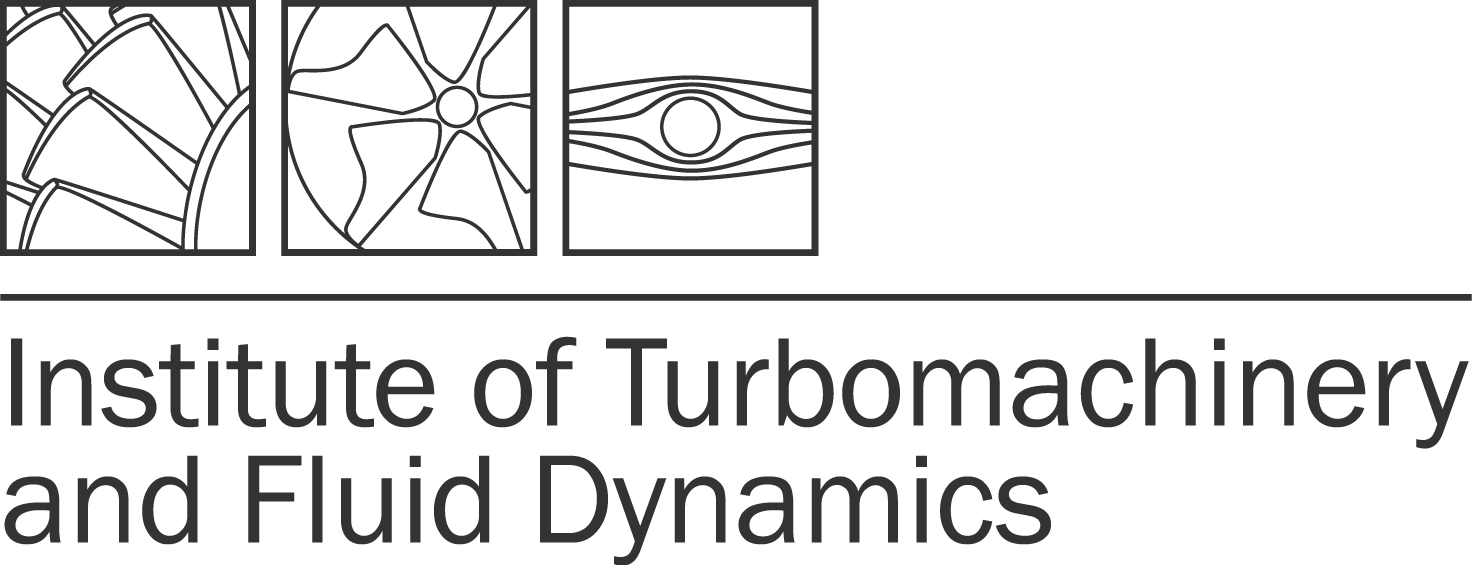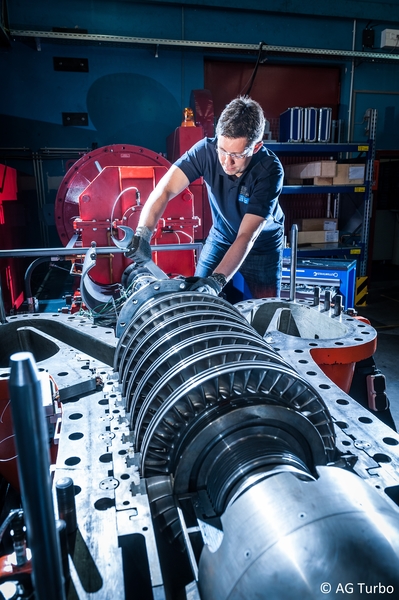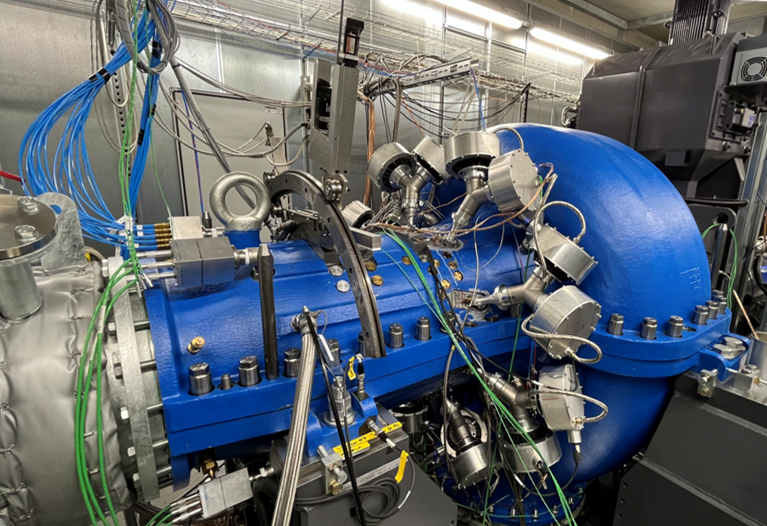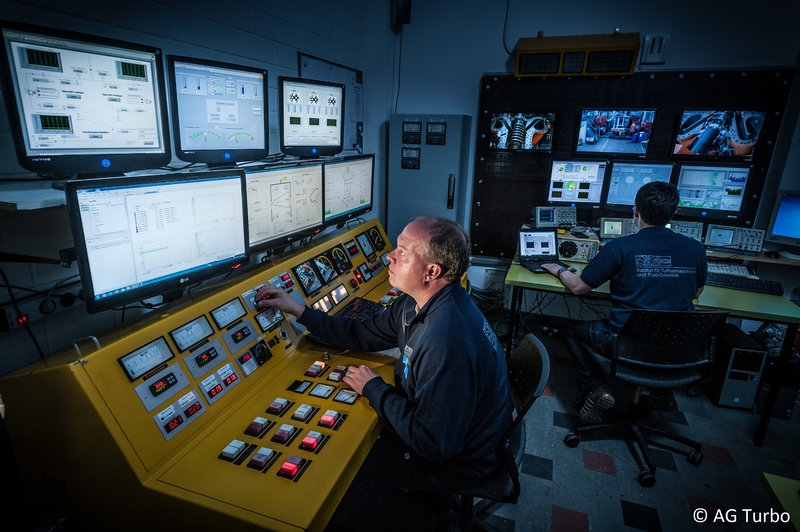Field of Application
- Investigation of aerodynamic problems in single and multi-stage axial turbines
- Investigation of different blade designs due to high flexibility
- Investigation of forced and aeroelastically-excited blade vibrations in axial turbines
- Investigation of multi-stage effects
- Investigation of unsteady aerodynamics in axial turbines
- Acoustic transportation in axial turbines
- Investigation of axial gaps
Description
The relatively long axial rotor design uniquely enables the investigation of up to seven turbine stages, which are installed either on classic drum rotors or on a modern tie-rod rotor. For this reason, the test rig is particularly suitable for investigating multi-stage effects, e.g. from the field of flow path optimization or cross-stage transient effects (acoustics, aeroelasticity).
The main component of the trainer is the pressure-maintaining turbine housing in classic steam turbine design together with its peripheral equipment. The turbine casing can accommodate various turbine configurations by converting the guide vane supports and the rotor, so that investigations of blading adapted to the scientific problem are possible, which can be designed and manufactured for specific projects if required.
The turbine is driven by compressed air as the process medium. The blading transfers the useful work to the turbine rotor, which is coupled to the load machine via a high-precision torque measuring shaft. Via the load machine, the turbine speed can be controlled independently of the set mass flow rate through the turbine and also enables a smooth transition between load and drag operation of the plant. Special attention is paid to the operating point stability, which is ensured via the compressor station of the CMG and the control of the load machine.
In addition to basic investigations of the flow field in low-pressure turbines, e.g. blade wake interaction, investigations of aeroelastic issues as well as the investigation of multistage effects are carried out using the example of modern high-pressure steam turbine blading systems. Particularly with regard to partial and light load operation, the test vehicle is suitable for reproducing the flexible operation of real gas and steam turbines. In the course of the acquisition and implementation of public and third-party funded projects, the trainer was successively adapted to modern issues and equipped with state-of-the-art measurement technology.
Measurement Techniques
- Steady and unsteady pressure measurement techniques
- High precision temperature measurement technique (thermocouple Typ K and PT100)
- Application of steady and unsteady measuring miniaturized flow vector probes
- Up to 8 radial probes traversing with flow vector probes simultaneously possible
- Permanent recording of inlet and outlet conditions by pressure rakes
- Blade instrumentation (steady/unsteady)
- Speaker and microphone measurement technique for inserting acoustic noise and measuring the acoustic transportation
- CTA probes for measuring velocity vectors and flow field turbulence
- Endoscopic 3-component Particle Image Velocimetry (PIV) for determining the flow field
- Several circumferential traversing sensors for high-resolution measurements
Specifications (current setup)
| Stagenumber/ configurations: | 0,5; 1; 1,5; 2; 3; 4; 5; 7 |
| Rotor design: | 1 to 7-stage longitudinally grooved solid rotor |
| 7-stage solid rotor with circumferential grooves | |
| 1-stage blisk tie rod rotor | |
| Max. rotational speed: | 10.000 1/min |
| Max. inlet pressure: | 4 bar |
| Max. inlet temperature: | 180 °C |
| Max. flow rate/ mass flow: | 20 kg/s |
| Max. Power: | 3.000 kW (electrical) |
| Min. hub diameter: | 270 mm |
| Max. casing diameter: | 480 mm |
| Weight incl. blading: | 6.000 kg |
Contact
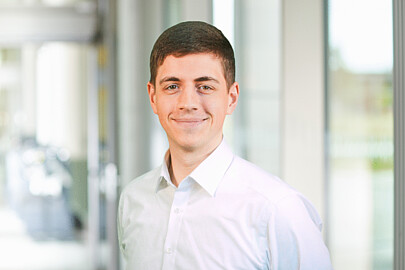

30823 Garbsen


